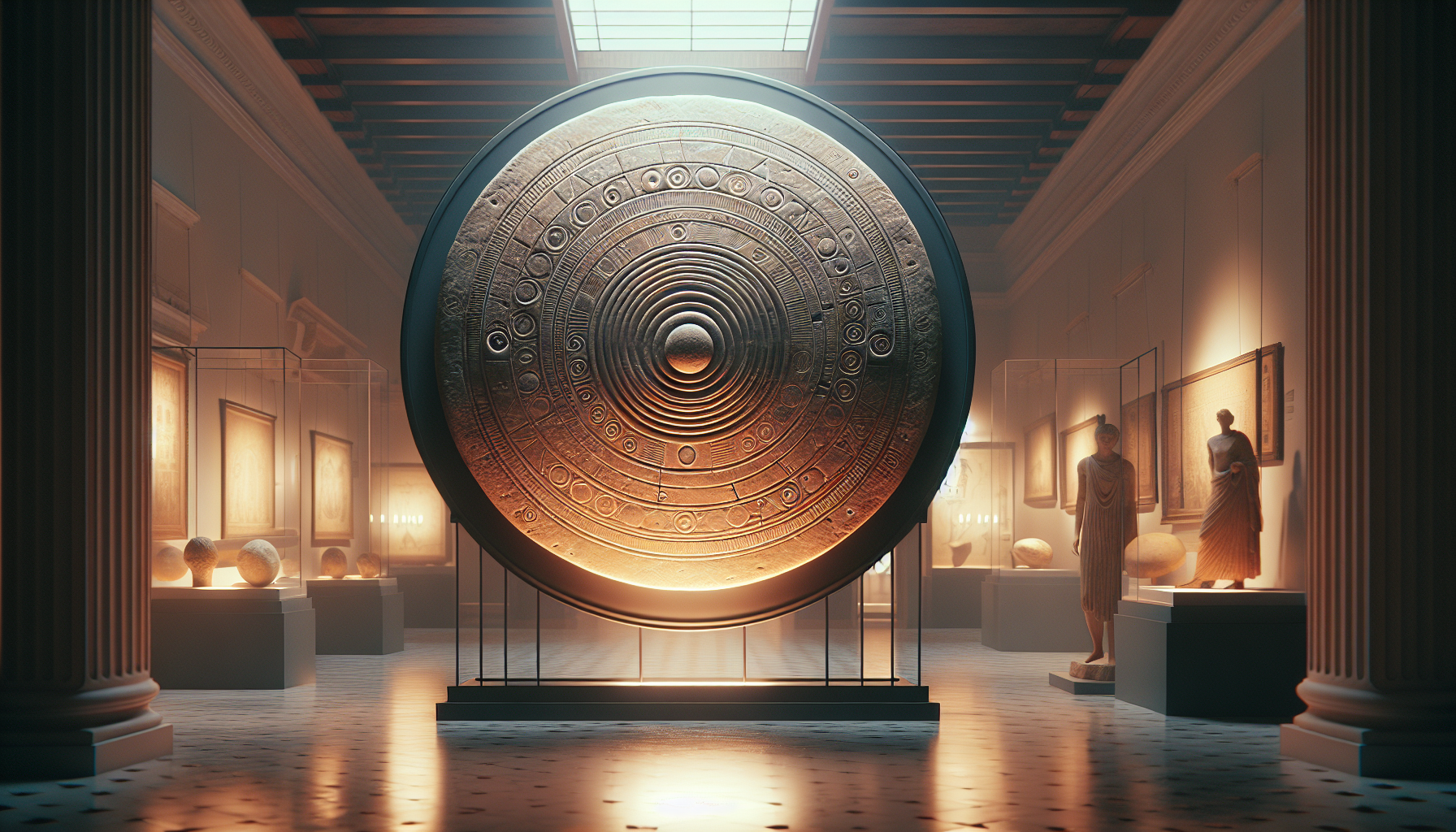The Iron Pillar of Delhi stands as a testimony to the advanced metallurgical skills of ancient India. Erected over 1600 years ago during the reign of Chandragupta II, this metallurgical wonder showcases not only the ancient forgers’ proficiency but also an early understanding of materials that withstand corrosive environmental forces.
The Gupta Empire’s Metallurgical Excellence
The Gupta period, often hailed as the Golden Age of India, not only flourished in arts and sciences but also marked significant strides in the field of metallurgy. The Iron Pillar of Delhi is a compelling testament to this era’s advanced metallurgical prowess. Crafted during the reign of Chandragupta II, this remarkable structure highlights the sophisticated ironworking skills and the innovative use of materials that characterized the period.
- Corrosion Resistance: The pillar’s resistance to corrosion, despite being over 1600 years old and exposed to harsh environmental conditions, underscores a mastery of ancient engineering that puzzles and fascinates modern scientists.
- Technological Sophistication: The Gupta metallurgists deployed techniques that anticipated the effects of weather and time, embedding in their creations a durability that challenges contemporary understanding.
The Inscription and Its Meanings
Adorning the pillar is a Sanskrit inscription that is as much a linguistic relic as it is a clue to the pillar’s origins and purpose. This inscription praises King Chandragupta II, known as King Chandra, attributing the construction of the pillar to his reign. The script not only venerates the ruler but also serves as a critical piece in unraveling the pillar’s history and affirming its date of creation.
- Sanskrit Inscription: The inscription, deciphered by scholars over the years, reveals insights into the cultural fabric of the time, suggesting that the pillar may have had both a religious significance as well as a commemorative one.
- Original Location and Significance: It is believed to have originally been erected at a place called Vishnupadagiri—translated as “hill with an imprint of Vishnu’s foot”—indicating its connection to Hindu mythology.
This blend of cultural depth and scientific achievement encapsulated in the Iron Pillar of Delhi not only highlights the advanced state of Indian metallurgy but also paints a vivid picture of the era’s cultural and historical landscape, offering profound insights into the life and times during the Gupta Empire.
Composition and Metallurgy
The Iron Pillar of Delhi, a marvel of ancient engineering, is renowned for its exemplary rust-resistant properties, attributed primarily to its unique metallurgical composition. The pillar is primarily composed of an iron-carbon-phosphorus alloy, which plays a critical role in its astonishing durability and minimal corrosion over centuries. The peculiar metallurgical phenomena that allow such endurance are of keen interest not only to historians but also to scientists and engineers worldwide.
Alloy Composition and Microstructure
The durability of the Iron Pillar can largely be attributed to its high phosphorus content, rare in the iron used in today’s engineering applications. Investigations reveal that the iron used does not merely stem from mundane iron extraction processes; rather, it suggests a sophisticated method of ironworking that was clearly ahead of its time. This high phosphorus content, coupled with low sulfur and manganese, contributes to what is known in materials science as the formation of a “protective passive film” on the surface of the iron. This film acts as a barrier, protecting the underlying metal from atmospheric corrosion.
Moreover, metallurgical analysis reveals a fine, even crystalline structure within the metal, indicating that the iron was forged meticulously, adhering to controlled cooling processes which would have been necessary to achieve such results. The ancient forgers of the pillar had not only mastered the extraction of iron but had turned their ironworking skills into an art, manipulating the metal to enhance its oxidative resistance profoundly.
The Mystery of Rust Resistance
The conundrum of how the Iron Pillar has resisted corrosion for over sixteen centuries can be delved into through the lens of archaeometallurgy. Researchers posit that the climate of Delhi, coupled with the geomagnetic characteristics of its location at the Qutb complex, may also contribute to the corrosion resistance exhibited by the pillar. Additionally, the metallurgical innovations implied by the phosphorus-rich iron highlight a significant advancement in ancient materials technology.
Traditionally, the passive film formed over the pillar, predominantly composed of misawite—a compound of iron, oxygen, and hydrogen—has been credited for this corrosion resistance. This layer, unlike rust that is detrimental, helps protect the metal beneath it. Theories suggest that the artisans in the Gupta Empire discovered a rudimentary but effective form of what modern metallurgy terms “weathering steel,” which forms a similar protective layer when exposed to the elements.
The insights gained from studying such a unique instance of ancient metallurgy not only illuminate past engineering practices but also offer prospects for improving the materials used today. The Iron Pillar’s metallurgical makeup challenges our understanding of historical iron extraction and might just hold the key to unlocking new levels of durability in modern metallurgical applications. Whether through accidental discovery or deliberate innovation, the composition and microstructure of the Iron Pillar serve as a testament to the advanced technological capabilities of ancient India, underscoring a legacy that stands robust even in the face of modern scientific scrutiny.
Architectural and Cultural Significance
Symbolism and Usage
The Iron Pillar of Delhi isn’t just a marvel of metallurgical ingenuity—it’s a deeply symbolic structure embedded within the cultural fabric of the region. Situated within the Qutb complex, a site brimming with historical and architectural treasures, the pillar likely served multifarious functions during its time. Historical interpretations suggest it may have been used as a dhvaja-stambha (a flag standard) by King Chandragupta II, symbolizing his divine and sovereign authority. This conjecture is fortified by:
- Strategic Placement and Height: Making it an ideal standard bearer that could have proudly displayed a regal or divine banner visible from afar.
- Inscription Praise: The inscription in praise of King Chandragupta II, engraved in archaic yet exquisitely detailed Sanskrit, hints at another intriguing possibility—that of the pillar serving an astronomical purpose.
- Astronomical Function: Ancient Indian astronomers, skilled mathematicians, might have used this towering pillar as a gnomon for measuring the sun’s shadow, thus determining celestial events like solstices and equinoxes.
Such multi-utility not only underscores the technological sophistication of the Gupta era but also reflects a holistic approach to functionality, combining practical utility with spiritual and regnal symbolism.
Influence on Modern Metallurgy
The lingering influence of ancient Indian metallurgy, epitomized by the Iron Pillar, extends beyond historical curiosity and enters the realm of modern material science. The pillar’s unique iron-carbon-phosphorus alloy, characterized by its significant resistance to atmospheric corrosion, continues to inspire and challenge today’s metallurgists and corrosion scientists.
Key aspects include:
- Unique Alloy Composition: Characterized by its resistance to atmospheric corrosion, it continues to inspire and challenge modern metallurgists.
- Protective Passive Film: The principles observed in its resistance—primarily the formation of a thin yet robust protective passive film of misawite.
- Modern Metallurgical Studies: This ancient artifact has spurred modern investigations into the weathering of steels and the development of new, rust-resistant alloys.
- Ancient Forge Welding Techniques: Observed in various segments of the pillar through sophisticated scanning technologies, revealing an ancient technique that has parallels in modern procedures.
This cross-temporal dialogue between ancient wisdom and contemporary practice enhances our understanding of historic methodologies and provides a repository of knowledge that could potentially revolutionize aspects of modern material science.
Moreover, the architectural integration of the Iron Pillar within the Qutb complex offers insights into the ancient engineering ethos that integrated aesthetic elegance with substantive durability—a principle profoundly relevant to modern architectural and structural engineering disciplines. The placement, composition, and enduring nature of the Iron Pillar of Delhi make it an artifact of both cultural pride and technical inspiration, thus continuing to influence fields as diverse as metallurgy, cultural studies, and conservation science.
Conservation Efforts and Challenges
Protecting a Legacy
The task of preserving the Iron Pillar of Delhi, an artifact showcasing the pinnacle of ancient Indian metallurgy, has been entrusted to the Archaeological Survey of India (ASI). Known for its astounding rust-resistant properties, this monumental pillar not only stands as a testament to the metallurgical expertise of ancient times but also as a cultural heritage that has weathered the centuries remarkably well. The ASI has implemented several preservation techniques aimed at maintaining the structural integrity and aesthetic value of the pillar. Regular assessments and careful monitoring of the pillar’s condition help in preempting potential deterioration caused by environmental and anthropogenic factors.
Factors Impacting Preservation
The preservation of the Iron Pillar is no small feat, especially considering the myriad challenges it faces. One of the primary concerns is the atmospheric corrosion primarily due to pollution in Delhi, which has significantly increased since the pillar’s erection. The phosphorus content in the iron, while contributing to its rust-resistance, also makes the maintenance process more complex due to its rare composition. Human interaction also poses a significant threat; despite barriers, the tactile nature of human curiosity leads to occasional touching and tampering, which can accelerate wear and tear.
Moreover, fluctuations in Delhi’s atmospheric conditions, involving variations in humidity and temperature, add another layer of complexity to the conservation efforts. Seasonal changes can affect the protective passive film on the pillar’s surface, which is primarily responsible for its non-rusting properties. Ensuring that this layer remains intact requires not only chemical treatments and physical barriers but also a controlled environment that minimizes these fluctuations.
The role of environmental factors cannot be overstated. With the increasing urbanization in Mehrauli and the broader Delhi region, the pillar is subjected to pollutants that were not present during its creation. These pollutants can accelerate the deterioration processes, countering the innate oxidative resistance properties of the pillar. Therefore, modern conservation techniques such as the use of weather-resistant coatings and controlled access are applied to shield the pillar from direct exposure to harmful elements.
The challenge is balancing the preservation of its original state with the integration of modern preservation methodologies. Each step taken to preserve the Iron Pillar involves a meticulous process of planning and execution, ensuring that future generations will continue to marvel at this ancient testament to India’s rich history in metallurgy and engineering.
Scientific Studies and Insights
Archaeometallurgical Investigations
Delving into the enigmatic corrosion resistance of the Iron Pillar of Delhi, numerous studies spearheaded by the Indian Institute of Technology (Kanpur) have unfolded layers of insights into ancient Indian metallurgy. These investigations emphasize a sophisticated understanding of iron-carbon-phosphorus alloys, suggesting a deliberate addition of phosphorus to enhance oxidative resistance. The pillar’s metallurgical analysis reveals a composition notably devoid of sulfur and manganese, which closely aligns with the metallurgical curiosities noted by scholars about its remarkably rust-resistant nature.
The intriguing aspect here isn’t just the alloy’s composition but its treatment:
- Theoretical Composition: Theories propose that the iron might have been derived from meteoric sources, indicated by trace elements of nickel and cobalt.
- Smelting Techniques: The pillar showcases advanced smelting techniques of the time that effectively separated impurities from the iron.
- Reduction of Slag Inclusions and High Phosphorus Content: This was likely from the refining process and is thought to have played a pivotal role in forming the protective passive film that wards off corrosion even today.
Comparative Analysis with Modern Materials
Transitioning from ancient prowess to modern technology, the Iron Pillar’s material properties bear a striking resemblance to modern weathering steel, known for its protective patina forming capacity that guards against further corrosion. Weathering steel, often utilized in bridge construction and outdoor sculptures today, demonstrates a similar resistance to atmospheric corrosion, a principle evidently mastered by ancient metallurgists over a millennium ago.
Published Comparisons by Material Scientists:
- Similar Metallurgical Attributes: Illustrate how the ancient iron shows properties akin to contemporary non-corrosive alloys.
- Augmenting Our Understanding: These analyses not only enhance our understanding of ancient materials but also illuminate paths for incorporating historical wisdom into current material science endeavors.
Practical Applications:
- Preservation: The continuous study aids in preserving other ancient artifacts.
- Innovation: Potentially usher innovations in corrosion-resistant materials.
Through these detailed scientific explorations, our comprehension of the Iron Pillar’s metallurgical composition transcends mere academic curiosity and steps into the realm of practical application. The continuous study of the Iron Pillar serves as a robust bridge connecting historical artifacts and modern science, illustrating that ancient methods can provide foundational insights for futuristic technologies.
Broader Implications and Future Research
Lessons for Modern Engineering
Reflecting on the Iron Pillar’s ancient construction reveals intriguing parallels with contemporary engineering solutions. Its unparalleled rust-resistant properties prompt an examination of traditional Indian iron smelting, suggesting potential revivals or adaptations of these ancient techniques. In today’s terms, the methodologies employed could enhance the durability and sustainability of modern infrastructures, combining old-world knowledge with new-world environmental consciousness.
Potential of Historic Alloys in Contemporary Applications
The meticulous study of the Iron Pillar’s metallurgical composition offers a veritable goldmine of insights into the application of historical alloys. The iron-carbon-phosphorus alloy, pivotal to the pillar’s enduring nature, underscores the feasibility of revisiting and harnessing these ancient formulations to fortify modern materials against corrosion. It’s not just a lesson in preservation; it’s a compelling directive to rethink how the materials of the past can be requisitioned for the future, potentially leading to innovations in fields ranging from aerospace to architecture. This fusion of past and present technologies could dramatically alter the landscape of materials science, offering new pathways for the development of more sustainable and efficient materials.




